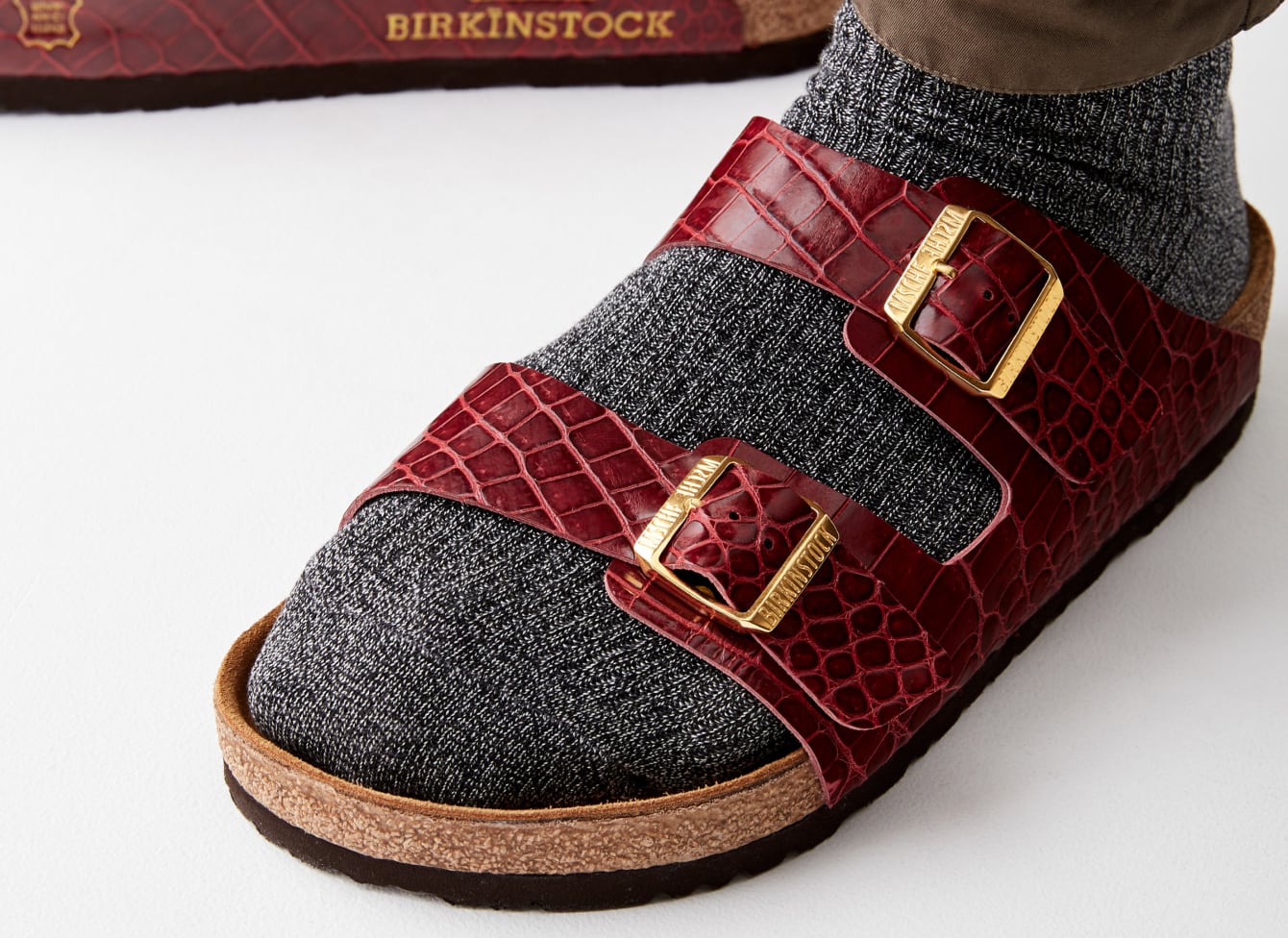Renowned for its unconventional, often satirical products that fuse art, technology, and capitalism in unusual ways, the Brooklyn-based internet collective MSCHF has unveiled yet another viral sensation that pushes the boundaries and creates conversation: the “Microscopic Handbag.” Designed to resemble Louis Vuitton’s OnTheGo GM monogrammed tote bag, this tiny 3D printed model is so small it can only be viewed under a microscope.
“Smaller than a grain of sea salt and narrow enough to pass through the eye of a needle, this is a purse so small you’ll need a microscope to see it,” said the group on an Instagram post unveiling the bag. “There are big handbags, normal handbags, and small handbags, but this is the final word in bag miniaturization. As a once-functional object like a handbag becomes smaller and smaller, its object status becomes steadily more abstracted until it is purely a brand signifier.”
As the name suggests, the Microscopic Handbag is a diminutive tote bag with dimensions of 657 x 222 x 700 μm (micrometers), barely larger than a grain of sand. This minuscule accessory was crafted using a complex technique known as two-photon polymerization, a form of stereolithography commonly employed to create tiny mechanical biotech structures. The materials used in producing this art piece include photopolymer resin, a gel case to preserve the structure, and a microscope to facilitate viewing. As for the product’s display dimensions, they measure 30 x 16 x 8 inches (76.2 x 40.64 x 20.32 cm).
“It is the final word in bag miniaturization,” describes the brand. “Previous small leather handbags have still required a hand to carry them- they become dysfunctional, inconveniences to their ‘wearer.’ Microscopic Handbag takes this to its full logical conclusion. A practical object is boiled down into jewelry, all of its putative function evaporated; for luxury objects, useability is the angels’ share.”
Set to be auctioned at Pharrell Williams’ digital-first auction house and content platform JOOPITER in 8 Avenue Matignon, Paris, the minuscule handbag will be securely mounted beneath a microscope and sealed within a gel case. The public will have the chance to see the Microscopic Handbag in JOOPITER’s exhibit starting June 20 until 24, 2023. Worldwide bidding for this unique item opened on the “Just Phriends” platform on June 19 and will run until the 27th. Bidding starts at $15,000 but could run as high as $25,000.
While the 3D printer manufacturer responsible for the Microscopic Handbag has not been disclosed, MSCHF likely collaborated with a company skilled in two-photon polymerization and microscopic scale printing. In this specialized sector, both Nanoscribe and UpNano are industry leaders, making them potential collaborators for this project. Nanoscribe, a German company, is renowned for its pioneering role in 2PP technology, creating high-precision 3D printers that fabricate structures at the micro and nanoscale. Its technology caters to various industries, including micro-optics, MEMS (micro-electro-mechanical systems), and life sciences. Similarly, UpNano, based in Austria, designs 2PP 3D-printing systems for industrial and academic research applications, focusing on high-resolution 3D printing at both the nanoscale and microscale levels.
Beyond Nanoscribe and UpNano, other companies are beginning to emerge in this niche field. Despite the technology being in its early stages of commercialization, Swiss startup Femtoprint has been making strides in microfabrication. Although 2PP isn’t its sole focus, it offers FemtoPrint technology to manufacture micro-devices capable of producing micro and nanoscale features.
Known for their provocative and thought-provoking creations that often play with societal norms and consumer culture, MSCHF’s decision to create a tiny, microscopic bag is a play-by-play on consumerism and luxury branding, reflecting on how far people will go to own a designer product, even if it’s too small to use.
MSCHF has been behind famous bespoke projects like the “Birkinstocks,” a $34,000-plus Birkenstock-like shoe made from actual Hermes Birkin bags, the “88 Holes” art piece (a Basquiat painting cut into 88 bits), and “Finger On The App,” a mobile game where the last person to keep their finger on the screen wins a cash prize.
However, the collective has stirred both admiration and controversy, having faced legal troubles due to its use of established brands in several projects. For example, Nike sued over the “Satan Shoes” project, where MSCHF collaborated with rapper Lil Nas X to modify Nike’s Air Max 97s. These modified shoes, which supposedly contained a drop of human blood in the soles, were sold without Nike’s permission, leading to a lawsuit in March 2021 for trademark infringement. Later Vans sued them over their “Wavy Baby” shoe, a sneaker model similar to a Vans Old Skool.
Often treading the line of what is considered legal, MSCHF’s projects are never short of provocative artistic expressions. They blend art and commerce in ways that challenge traditional interpretations of intellectual property law. The brand’s hard-hitting marketing strategies and bespoke products have gained plenty of traction on social media and made its products desirable acquisitions for wealthy collectors. Who will buy the tiny Louis Vuitton 3D printed bag?
Subscribe to Our Email Newsletter
Stay up-to-date on all the latest news from the 3D printing industry and receive information and offers from third party vendors.
Print Services
Upload your 3D Models and get them printed quickly and efficiently.
You May Also Like
Reinventing Reindustrialization: Why NAVWAR Project Manager Spencer Koroly Invented a Made-in-America 3D Printer
It has become virtually impossible to regularly follow additive manufacturing (AM) industry news and not stumble across the term “defense industrial base” (DIB), a concept encompassing all the many diverse...
Inside The Barnes Global Advisors’ Vision for a Stronger AM Ecosystem
As additive manufacturing (AM) continues to revolutionize the industrial landscape, Pittsburgh-based consultancy The Barnes Global Advisors (TBGA) is helping shape what that future looks like. As the largest independent AM...
Ruggedized: How USMC Innovation Officer Matt Pine Navigates 3D Printing in the Military
Disclaimer: Matt Pine’s views are not the views of the Department of Defense nor the U.S. Marine Corps Throughout this decade thus far, the military’s adoption of additive manufacturing (AM)...
U.S. Congress Calls Out 3D Printing in Proposal for Commercial Reserve Manufacturing Network
Last week, the U.S. House of Representatives’ Appropriations Committee moved the FY 2026 defense bill forward to the House floor. Included in the legislation is a $131 million proposal for...





































